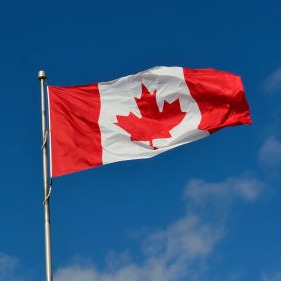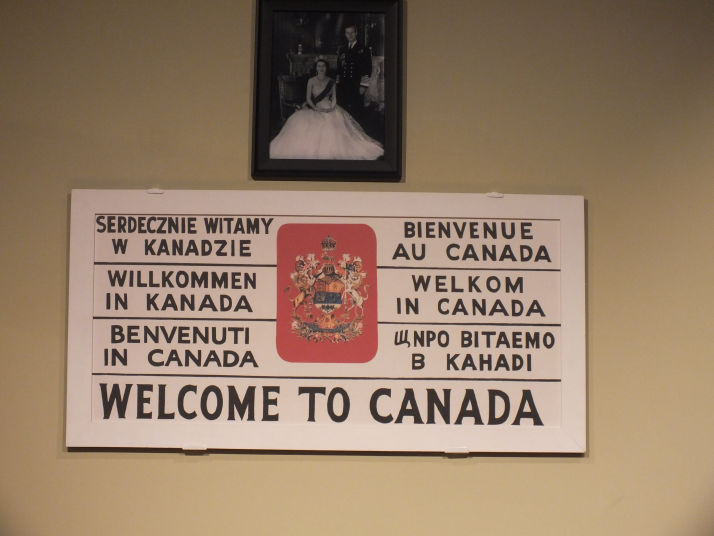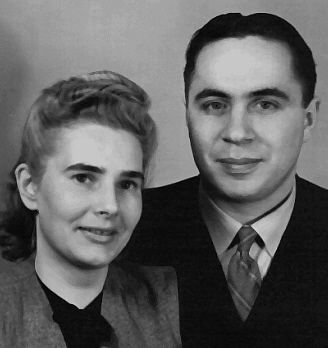
Immigration
Arriving in Canada with no Visa's, how were the Walnut passengers received?

Arriving in Canada with no Visa's, how were the Walnut passengers received?
According to an article written in 1998 by Paul Rabisson appearing in the Meie Elu newspaper, Viking ships arriving in Canada between 1945 and 1950 brought many Estonian passengers. The author's research shows that 50 Estonian boats left from Europe, primarily from Sweden. Of those, 16 arrived in the USA, 11 in Canada, 6 in South Africa, 5 in Argentina, 3 in England, and one went to Brazil. Two ships perished in storms and the Russians hijacked the Estonian ship "Billy" while on the Atlantic. Two ships went missing.
One Halifax visitor recalls reading a plaque in Pier 21 that quoted the number of Estonians arriving via Pier 21 as 14,665. A Pier 21 newspaper writes that:
"Baltic immigrants of 1948-49, are, by numbers the smallest of hiccoughs in Canada's immigrant arrivals....they arrived in the span of a single year, most frequently in numbers fewer than 50 at a time." ["The 'Little Boats' from the Baltic, 1948-1949" The Times of Pier 21, by Steven Schwinghamer.]
Canada is known as a "nation of immigrants". Everyone's story of immigration is an act of faith and bravery. The chair of the Pier 21 Foundation, Ruth Goldbloom, explains that one in five Canadians has a direct link to Pier 21.
The Walnut passengers entered the humble-looking building on the waterfront of Halifax on December 13th, 1948.
One Walnut passenger tried to recall her immigration experience. She remembers passengers standing in zigzag lines and being taken to Rockhead Hospital. Canada's welcome was very warm and friendly.
The passengers were first led into the Assembly Hall, to await their turn for an interview with an immigration officer. Ice cream and sweet biscuits were passed out to the passengers. The Hall was a large rectangular room about one hundred fifty feet long. It had a cement floor which held row upon row of wooden benches toward which disembarking passengers were directed. Bright sunlight flooded in from a row of windows atop the high ceilings. At the front of the room was a desk labelled Canada Immigration. Officers in smart suits and caps stood at the table behind which hung a large white banner with red lettering, “Welcome to Canada.”

From the Assembly Hall, passengers were directed toward medical and civil examination spaces. They were questioned and documented. Next, passengers moved on to a ramp that crossed into the Annex Building for customs inspections.
The voyage had taken almost a month. Having lived on the ship prior to its departure, passengers had spent nearly six weeks on board. Their first evening in Canada was spent with fellow passengers at the Rockhead Quarantine Hospital at the north end of Halifax. All who were single or married without children had been sent there. The other one hundred fifty or so passengers and those with children were provided accommodation at the Canadian Immigration Detention Quarters at the Seawall. Their first meal was excellent, a roast with vegetables, bread, butter, pudding and coffee. Everyone had a proper bed in which to sleep, there was plenty of fresh air, and the ground didn’t move.
Food was provided for them, but passengers took on the role of cooking for themselves. Learning English began in earnest with knowledgeable fellow passengers teaching classes. The many children were organized into a children’s choir and spent their time learning English and practicing Estonian Christmas songs. Adult passengers also organized a choir. The Walnut choir was invited to sing in a Halifax Lutheran church and to partake of fellowship thereafter.
Some of the children were taken for visits to local family homes, returning with armloads full of boxes and bags containing gifts and toys. Church services were arranged for the holidays and there was a Christmas party where the Captain played Santa. The Red Cross brought beautifully wrapped Christmas presents for all the children. When December 31st arrived, the passengers came up with ingenious costumes for a New Year’s celebration – their first of many in a new land.
Local newspapers wrote often about the Walnut ship and its human cargo. Passengers were interviewed about their suffering under a communist regime and their reasons for the voyage. All told the reporters that arriving in Halifax was their happiest of days.
The many small Baltic refugee boats arriving at Pier 21 came to be known as the “Viking Boats”. Canada was in the middle of an economic boom and was suffering a labour shortage. The Baltic peoples of Estonia, Latvia and Lithuania were considered high on Canada’s list of preferred immigrants. Until the arrival of four hundred and ninety Tamils in 2010, the Walnut was the largest arrival of illegal refugees by boat. Her arrival showed that the admittance of newcomers depended not only upon the Immigration Act and its rules and procedures, but also on the discretion of local immigration officials and public opinion.
They had risked coming to Canada. They knew their entry was illegal and that they had no permissions, sponsors nor paperwork, but they had gambled and come anyway. Their risk paid off, for after investigating the background of each Walnut passenger, all but two were admitted to Canada. The immigration restrictions of the day were waived by the issuance of Orders-in-Council to allow the ad-hoc entrance of each passenger.
By the end of January, most of the passengers of the Walnut were ready to leave spreading out to various destinations throughout Canada. Most were heading by train to Ajax, a suburb of Toronto where work assignments had been arranged. They were to be housed in university student apartments. A farewell party was held with local Canadian immigration officials. The words “thank you” just didn’t seem to be enough.
Koidula Roiser recalls:
The Canadian immigration officer held out his hand for my Swedish passport, the one with the red covers on which was printed FRÄMLINGSPASS, SVERIGE, the one that had first been issued to me on October 11th, 1944, shortly after landing on the shores of Sweden. Every year an entry had been made into the book, 1944-1945, 1945-1946.
As the time periods had come to an end and a new one had begun, “ej giltig”, not valid, had been stamped across each entry. My passport had already been stamped PASSED on January 20th, 1949, by the Canadian medical inspector. As I passed over my book, I knew that this would be the final entry. The immigration officer flipped the pages, rolled his stamp on the ink pad, and stamped - Canada Immigration, Halifax, Nova Scotia, January 31, 1949 - LANDED IMMIGRANT !
Right: Koidula and her husband Eduard Roiser.

Note the stamp two days prior to the Walnut's departure on November 15th, 1948 at Lysekil.
A Jan. 20th, 1949, entry indicates that Koidula has passed her medical inspection.
The final entry into the Swedish passport is the Canadian Immigration stamp on January 31st, 1949, and the designation "LANDED Immigrant".
An immigration report included a notation that 250 Walnut passengers had been transferred to Rockhead Hospital. The remaining 97 were in civil detention quarters and the Immigration hospital. The Red Cross and Social Services showed a keen interest in the welfare of the refugees. All 250 refugees had been x-rayed. The inspector in charge noted: "They [the refugees] lack colour and no doubt could do with more fresh air and exercise."
For immigration purposes the following report dated December 14th, 1948, was prepared by several Walnut passengers.
Sailing
S.S. "Walnut" left Gothenborg, Sweden, Nov. 13-th, 1948 in Lysekil there she left Nov. 17. At North-Sea we met a cale [gale] force of 9. Put in Sligo [not legible] for completing bunkers.
In Ireland the people were very kind. Departed Sligo on the 27th of Nov. four priest by the ship gave a pray and God's blessings for safe journey. Also promised for 7 days to pray for us each morning.
Two days since we left Ireland met a cale [gale] force 8-9 which lasted about two days. Encountered another cale [gale] on the 6th of Dec. which lasted for four days. Cape Breton was the first land we sighted since left Ireland. Most of the passengers were seasick for all time and many of them did not eat anything till we arrived at Sidney N.S.
Signed by H.S., A. Linde, Captain; A.K. J.S. and J.L.
Passengers
Age Groups
Nationality
154 - Men
223 - Women
70 - Children (under 16)
347 Total
158 - Married persons
119 - Unattached persons
70 - Children under 16
347 Total
9 - 0 years to 3 years
59 - 3 years to 16 years
277 - 16 years to 60 years
2 - 60 years & more
347 Total
254 - Adults over 21
93 - Minors - Less [than] 21
347 Total
305 - Estonians
9 - Lithuanians
10 - Latvians
8 - Finnish
1 - Danish
9 - Polish
3 - Austrian
2 - Amerian as stated
347 Total
The Walnut ship has become a prominent part of the Pier 21 National Museum displays. It is an example of how one the passengers of one of the smallest ships arriving in Canada helped to alter Canadian immigration policy.
At the time, preferred immigrants to Canada were British and Americans. Those from eastern and southern Europe were discouraged.
Her arrival showed that the admittance of newcomers depended not only upon the Immigration Act and its rules and procedures, but also on the discretion of local immigration officials and public opinion. After the Walnut's arrival, a special immigration officer was sent to Sweden and the doors for legal immigration were now opened.
"Baltic Refugees, Canadian Immigration Policy and the Arrival of SS Walnut" - Read about how the Walnut's arrival changed Canada's immigration policy - Article for Pier 21 by Jan Raska PhD. Researcher
We are currently awaiting for approval to post a number of Immigration Reports from the Canadian Department of Mines and Resources concerning the arrival and care of the refugees aboard the Walnut. If you'd like to donate further immigration materials, please contact us.